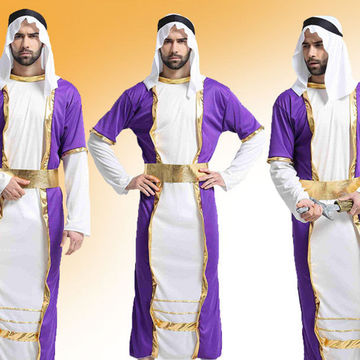Cheery Period Fashion: Eastern Wear Pakistan Styles for Every Celebration
Cheery Period Fashion: Eastern Wear Pakistan Styles for Every Celebration
Blog Article
Discover the most effective Option of Genuine Eastern Wear
Embark on a journey via the intricate globe of genuine Eastern wear, where social practices and sartorial elegance intertwine to create a tapestry of unrivaled beauty. The allure of Eastern outfit depends on its capacity to go beyond time and geography, offering a glimpse into the abundant heritage and craftsmanship of diverse regions. As you discover the myriad design and styles, each piece holds a story waiting to be untangled, welcoming you to accept the artistry and refinement that Eastern style encapsulates. Prepare to be captivated by the attraction of Eastern wear and submerse yourself in a globe where every garment is a testament to centuries-old traditions and beautiful craftsmanship.
History of Eastern Fashion

Today, Eastern style proceeds to captivate the international market, with designers drawing inspiration from conventional outfit to produce contemporary interpretations that appeal to a wide audience. The rich tapestry of Eastern style history serves as a testament to the creativity and craftsmanship of the craftsmens that have added to its development.
Sorts Of Eastern Outfit
Checking out the diverse selection of standard garments located in Eastern cultures reveals an interesting tapestry of styles and designs that show distinct backgrounds and social identifications (eastern wear pakistan). From the elaborate needlework of Indian sarees to the moving shapes of Japanese robes, Eastern outfit incorporates a wide array of styles. In South Asia, the vibrant and sophisticated salwar kameez is a preferred choice for women, while men frequently go with the traditional kurta pajama. Moving towards the Center East, the moving abayas and detailed kaftans are synonymous with traditional Arabian style. In East Asia, the streamlined lines of Chinese cheongsams and the strong shades of Korean hanboks display the rich sartorial heritage of these regions. Furthermore, Southeast Asia boasts the complex batik prints of Indonesia and the sarongs of Malaysia. Whether it's the extravagant fabrics of Persian clothing or the minimalist elegance of Vietnamese ao dai, Eastern attire uses a captivating glimpse right into the varied cultures and practices of the East.
Craftsmanship and Materials
A thorough evaluation of Eastern attire exposes the careful workmanship and charming products that underpin these traditional garments. Eastern wear is renowned for its elaborate needlework, delicate handwork, and attention to detail that showcase the skill and creativity of the craftsmen. From the vivid sarees of India to the streaming bathrobes of the Center East, each garment is a work of art of precision and devotion.
Workmanship in Eastern clothes often entails classic methods passed down through generations. Craftsmens invest hours, sometimes days, recommended you read carefully creating detailed patterns and styles that decorate the material. Whether it's the zardozi work with a Pakistani shalwar kameez or the kantha sewing on a Bangladeshi saree, the level of workmanship is unrivaled.
Moreover, the materials made use of in Eastern wear are carefully picked to make sure both high quality and credibility. eastern wear pakistan. Fabrics like silk, chiffon, velvet, and cotton are generally utilized, each chosen for its special homes that enhance the last garment. Embellishments such as grains, bangles, and mirrors add a touch of beauty and luxury to these standard ensembles, making them genuinely stand apart in the world of style
Popular Eastern Wear Patterns
Current years have experienced a revival in the appeal of standard Eastern wear, with a significant emphasis on combination styles and modern adjustments. One famous trend in Eastern wear is the consolidation of modern components into standard outfits, developing an unique mix of social heritage and modern style. Developers are reimagining classic silhouettes, such as the saree and salwar kameez, by instilling them with western cuts, innovative draping methods, and non-traditional embellishments.

Additionally, minimalist aesthetic appeals and monochromatic This Site color schemes have actually gained grip in Eastern wear, using an innovative and understated look. This shift towards simpleness mirrors a modern take on traditional designs, interesting those looking for a more polished and elegant style statement.
Tips for Designing Eastern Outfits
Incorporating modern components and traditional workmanship right into Eastern use opens up a myriad of styling possibilities for fashion enthusiasts looking to develop culturally rich and distinct clothing. When styling Eastern clothing, it's vital to find an equilibrium in between contemporary fads and typical aspects.
Accessories play an essential duty in raising an Eastern outfit. Pay interest to shoes selections, choosing for conventional mojaris or juttis for a full Eastern-inspired attire.
Finally, confidence is crucial when styling Eastern wear. Accept the social heritage and workmanship behind each item, and wear it with pride to absolutely symbolize the significance of Eastern fashion.
Final Thought
Finally, Eastern fashion supplies an one-of-a-kind mix of tradition and modernity, showcasing the abundant social heritage and workmanship of the East. With a varied variety of designs and products, Eastern clothes mesmerizes style fanatics worldwide. By checking out the history, types, workmanship, and fads of Eastern wear, individuals can accept the appeal and narration facets of this cultural clothing in their closet.
The background of Eastern fashion traces back centuries, showing varied cultural influences and typical craftsmanship. Today, Eastern style proceeds to mesmerize the international market, with designers drawing inspiration from conventional attire to create contemporary analyses that appeal to a broad target market. One noticeable fad in Eastern wear is the incorporation of contemporary elements into traditional clothing, producing an one-of-a-kind mix of social heritage and contemporary fashion.Including modern-day aspects and standard workmanship into Eastern wear opens up a myriad of styling possibilities for style lovers looking to produce culturally abundant and distinct clothing. published here eastern wear pakistan.In final thought, Eastern fashion provides a special blend of tradition and modernity, showcasing the rich cultural heritage and craftsmanship of the East
Report this page